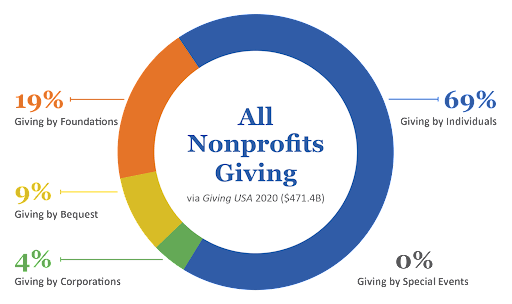Companion with a Nonprofit Company to Boost Your Organization's Success
Wiki Article
The Importance of Cooperation and Collaboration for a Nonprofit Company in Maximizing Resources and Enhancing Neighborhood Involvement
In the realm of nonprofit agencies, collaboration and partnership become vital devices for enhancing resources and fostering neighborhood involvement. By strategically involving with other companies, nonprofits can utilize shared proficiency and monetary support, consequently attending to facility social difficulties more expertly. Moreover, these alliances not only boost program efficiency but likewise cultivate a deeper sense of community participation and possession. Yet, the true capacity of these joint efforts usually remains untapped, questioning concerning just how ideal to navigate partnerships for optimal effect and continual success. What variables contribute to the effectiveness of these collaborations?Advantages of Partnership

Furthermore, partnership promotes technology by urging the exchange of ideas and best methods. When organizations interact, they can explore varied viewpoints, bring about imaginative services that may not emerge alone. This common analytic technique can ultimately improve service delivery and program outcomes.
In addition, joint efforts can enhance neighborhood interaction. When nonprofits partner with each other, they can activate broader support from stakeholders, consisting of volunteers, contributors, and neighborhood participants. This collective engagement not just boosts exposure but likewise enhances the reliability of the getting involved organizations.
Building Strategic Collaborations
Partnership among nonprofit firms frequently leads to the formation of calculated collaborations, which are important for optimizing influence and accomplishing common objectives. These collaborations enable companies to utilize each other's strengths, boosting solution shipment and increasing outreach. By straightening goals and missions, nonprofits can produce a collaborating impact that magnifies their reach and effectiveness within the area.Building calculated collaborations calls for cautious planning and shared understanding. Establishing open lines of interaction fosters count on, enabling companions to review duties, resources, and assumptions transparently.
Moreover, plainly specified duties and duties are necessary for responsibility and success. Defining the collaboration via created contracts can supply a framework for collaboration, outlining the extent of job, efficiency metrics, and examination techniques. By cultivating these calculated partnerships, not-for-profit companies can boost their capacity to address neighborhood needs, innovate options, and set in motion resources efficiently, ultimately bring about a much more sustainable and considerable effect in the communities they offer.
Sharing Resources Properly
How can nonprofit agencies maximize their impact through effective source sharing? By purposefully working together with other companies, nonprofits can enhance their functional look at this website effectiveness and prolong their reach within the neighborhood. Resource sharing entails merging various possessions, including funds, workers, expertise, and facilities, to attend to usual objectives better.
Additionally, leveraging each various other's staminas can promote development. By exchanging expertise and finest techniques, companies can boost service distribution and establish brand-new options to area difficulties. Reliable resource sharing likewise cultivates a sense of unity, strengthening the concept that cooperation is essential for achieving significant social impact.
Engaging the Area
What methods can nonprofit agencies use to efficiently involve their neighborhoods? First and leading, developing open lines of communication is vital. Utilizing various platforms, such as social networks, e-newsletters, and community forums, allows agencies to share details, get comments, and foster discussion. This two-way communication not only educates the area concerning the company's objective and activities however also invites input, making community members feel valued and entailed.In addition, creating collaborations with regional organizations can boost outreach initiatives. nonprofit agency. Teaming up with institutions, services, and other nonprofits can enhance resources and create a more considerable assistance network, enabling joint campaigns that resonate with community requirements
Furthermore, organizing neighborhood events, workshops, and volunteer chances can help with deeper involvement. These tasks produce a feeling of belonging and urge active involvement, allowing individuals to contribute to the company's objectives while building relationships with fellow area participants.
Gauging Joint Success
Examining the effectiveness of joint efforts is important for nonprofit firms seeking to optimize their influence. Determining collaborative success involves establishing clear, quantifiable objectives and utilizing a variety of metrics to assess efficiency. Trick indicators might include the variety of partnerships formed, sources shared, and why not check here the substantial end results attained through partnership.To effectively gauge success, nonprofits need to implement a structure that integrates both quantitative and qualitative data. Meetings and studies can provide insights into stakeholder fulfillment and sites the viewed value of collaborations. In addition, tracking metrics such as solution reach, community involvement levels, and monetary performance can provide an extensive sight of collaborative effectiveness.
Routine examinations must be conducted to identify areas of renovation and ideal practices. This iterative procedure not only boosts liability however also fosters a culture of continuous understanding within the company - nonprofit agency. By transparently sharing evaluation results with stakeholders and companions, nonprofits can enhance relationships and develop count on
Ultimately, determining collective success makes it possible for not-for-profit firms to refine their approaches, allocate sources extra successfully, and reinforce their mission-driven initiatives, leading to a better cumulative impact on the communities they serve.
Verdict

In the realm of nonprofit companies, cooperation and collaboration arise as essential systems for amplifying resources and fostering area interaction - nonprofit agency. By promoting these critical partnerships, not-for-profit agencies can boost their capability to deal with neighborhood requirements, introduce services, and activate resources successfully, ultimately leading to a more sustainable and considerable influence in the areas they serve
By strategically working together with other organizations, nonprofits can enhance their functional effectiveness and extend their reach within the community.What techniques can not-for-profit agencies employ to properly engage their neighborhoods?Collaboration and partnership stand as essential pillars for not-for-profit companies intending to make the most of sources and improve neighborhood engagement.
Report this wiki page